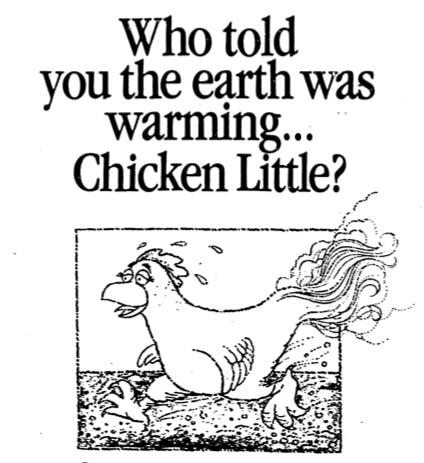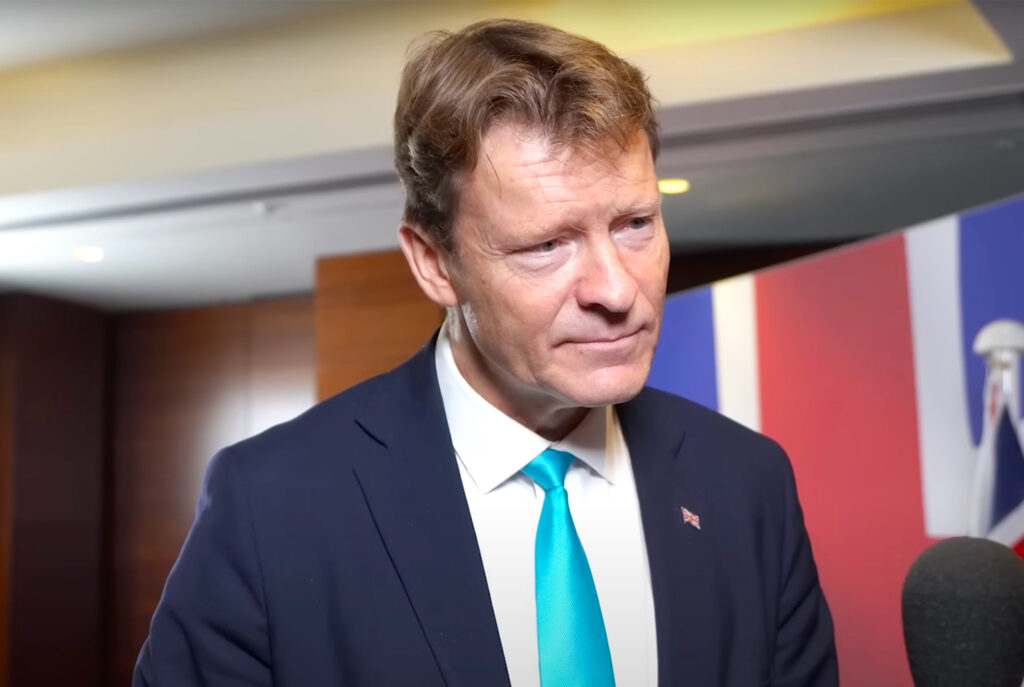So just in case anyone wasn’t sure, a major study of almost 12,000 scientific papers on global warming between 1991 and 2011 finds less than one per cent disagree that humans are the main cause.
Published in the journal Environmental Research Letters, the study led by John Cook, the Australia-based founder of Skeptical Science, confirms the debate about the causes of global warming had all but vanished in the scientific literature by the early 1990s. Almost all the research says it’s mostly caused by humans.
For any followers of climate science in journals (the place where it actually matters) the finding wasn’t really news at all.
Yet survey after survey finds the public still thinks scientists are arguing over the causes of global warming and the media continues to attempt to resuscitate long-dead ideas.
Does it matter that people have a clear understanding of the main thrust of the science? A 2012 study in the journal Nature Climate Change found that people were more likely to accept human-caused global warming if they were informed that scientists were in broad agreement (which we know they are).
For decades, fossil fuel-funded groups, free market think tanks (some of which also qualify as fossil fuel funded groups) and the fossil fuel industry itself have known the importance of the public’s understanding of the state of climate science. A public that understands the state of the science is more likely to want something done about climate change. Doing something, means using a lot less fossil fuel.
But who wanted to tell the public that a consensus didn’t exist? Here are just some of the campaigns run over the years showing how breaking the consensus in the eyes of the public was a key strategy.
Heartland Institute’s climate denial conferences
The Heartland Institute is a Chicago-based free market think tank launched in 1994, which has accepted millions of dollars from conservative groups and fossil fuel interests.
In 2008, Heartland decided to host a conference for climate sceptics in New York – it would be the first of eight conferences for skeptics and deniers (six of them were held in the US, one in Germany and one in Australia). The gatherings have been sponsored by dozens of other free market think tanks, including Australia’s Institute of Public Affairs.
Analysis by DeSmogBlog shows how the think tanks has accepted millions of dollars from vested interests, including more than $500,000 from Exxon.
Right from the start, the main purpose of the conferences was to give the impression of a debate among climate scientists. Before the first conference, Heartland Institute fellow and Forbes columnist James Taylor wrote to prospective speakers with an offer of $1000 and travel expenses for anyone willing to front up. The main purpose of the conference was not to further scientific knowledge, as Taylor explained:
The purpose of the conference is to generate international media attention to the fact that many scientists believe forecasts of rapid warming and catastrophic events are not supported by sound science, and that expensive campaigns to reduce greenhouse gas emissions are not necessary or cost-effective.
To be even clearer, the objective was to try and create the impression of a debate among scientists.
John Cook has provided DeSmogBlog with data from his study showing the state of the peer-reviewed science for the years when the campaigns were being plotted. This analysis shows that in fact, in 2008 when Heartland began its conferences, hardly any scientists in the peer-reviewed literature were rejecting the evidence that humans were causing global warming. There were 353 scientific papers that year saying explicitly that humans were causing global warming. Only three argued there was a different cause.
The Oregon Petition Project
In 1998, the Oregon Institute of Science and Medicine published a petition containing the names of 17,000 “scientists” which would later build to more than 31,000. The OISM petition project declared there was “no convincing scientific evidence” that greenhouse gas emissions would cause catastrophic climate change. Regulations to cut emissions would harm the environment, the petition said.
Skeptical Science analysed the qualifications of the signatories, and found 18,000 had qualified in fields unrelated to climate science, such as engineering, computer science and mathematics. Of the 13,245 scientists left (which represented only 0.1 per cent of science graduates) Skeptical Science found only a tiny fraction had qualified in a science remotely relevant to climate change.
Along with the petition was a letter written by Dr Frederick Seitz, a celebrated physicist and president of the US National Academy of Sciences from 1962 to 1969. Seitz claimed “research data on climate change do not show that human use of hydrocarbons is harmful” and that in fact extra CO2 would be environmentally helpful. Seitz had worked as a consultant for cigarette giant RJ Reynolds – earning $540,000 over the years – and helped hand out more than $45 million of the cigarette maker’s money for medical “research”.
Seitz was a co-founder of the George C. Marshall Institute (GMI), a conservative think tank that had been pushing climate science denial since the late 80s with the support of wealthy conservative foundations. In 1998 – the same year Seitz signed the petition letter – GMI accepted its first grant from Exxon and would go on to bank $840,000 from the oil giant.
Nine years before Seitz gave his name to the petition, an internal tobacco industry memo discussing a potential meeting with Seitz had said he was “quite elderly and not sufficiently rational to offer advice”.
John Cook’s study finds that in 1998 there were just three peer reviewed science papers rejecting the evidence that humans were the main cause of global warming. Some 96 said humans were the cause.
The Frank Luntz memo
In 2001, US pollster, communications guru and political strategist Frank Luntz wrote a report which would shape the Republican message on climate change. Luntz told CBC’s Fifth Estate program his research was originally “written for the energy community, written for business community and written for basically general consumption among those who at that time challenged the science of global warming”.
The George Bush-led Republican administration adopted Luntz’s advice in 2001. In the report, compiled in 2000, Luntz advised that the phrase “global warming” should be replaced with the “less frightening” term “climate change”. But Luntz also made clear his view of the importance of the scientific consensus in the minds of voters. He wrote:
Voters believe that there is no consensus about global warming within the scientific community. Should the public come to believe that the scientific issues are settled, their views about global warming will change accordingly. Therefore, you need to continue to make the lack of scientific certainty a primary issue in the debate.
In 2006 during a BBC documentary, Luntz defended his advice in the document saying it reflected the state of the science at the time. He said he now accepted that humans were changing the climate but added, “the science [in 2000] was not definitive. There were plenty of people at that point who were challenging it.”
So what was the peer-reviewed science looking like back in the year 2001 when George Bush took Luntz’s spin to the public? John Cook’s study shows there were 121 science papers that year which blamed humans for global warming. Only two rejected that humans were the main cause.
American Petroleum Institute
“Victory will be achieved when… average citizens ‘understand’ (recognize) uncertainties in climate science; recognition of uncertainties becomes part of the ‘conventional wisdom’.”
This was one conclusion of the “Global Climate Science Communications Plan” – a multi-million dollar proposal in 1998 to make climate change a “non-issue” by reaching out to media and the public. The plan, uncovered and documented by Greenpeace, was developed by several conservative think tank associates, climate science denial groups and staff from Exxon, major US coal corporation The Southern Company, Chevron and the American Petroleum Institute.
The plan cited a survey of “1,100 informed Americans” which had found that Americans “currently perceive climate change to be a great threat”. But the survey also revealed that persuading the public that there was no consensus on the science of climate change would be key to eroding concern.
The survey found that telling the public that scientists were in disagreement about the causes of climate change helped to erode their concern. When primed with this message, more than half said they were more likely to oppose the UN Kyoto treaty to cut emissions.
ICE
“Reposition global warming as theory (not fact),” was the main proposition of a campaign developed in 1991 by a coalition of US coal companies. Western Fuels Association and The Southern Company joined utilities association Edison Electric Institute to develop the campaign under a new group – the Information Council on the Environment.
Newspaper and radio advertisements were developed and a detailed PR campaign devised. Contrarian scientists Dr Robert Balling, Dr Pat Michaels and Dr Sherwood Idso would act as scientific advisors, make public appearances and write newspaper columns, the plan outlined.
One advert chimed “Who told you the earth was warming… Chicken Little?” and claimed that “evidence that the earth is warming is weak”. In any case, proof that carbon dioxide was the primary cause was “non existent”, the advert claimed. The intention was to convince the public that there was a raging debate among climate scientists about the causes of climate change.
John Cook’s study found that in 1991, this just wasn’t the case. There were 65 peer-reviewed studies blaming global warming on human activity in 1991. Only four blamed something else.
Dirty lessons
The lesson from these campaigns is pretty clear. If you give the public the impression that fossil fuel burning might not be the cause of climate change, then the vested interests think this waters down their concern and protects the viability of their product.
For free market fundamentalists and a significant chunk of conservative politics, the same rule applies. Hacking away at the public’s understanding of the causes of climate change reduces the pressure on governments to regulate greenhouse gases and keeps the “free market” ideologues happy.
For the rest of us, cutting the risks of dangerous climate change became collateral damage.
For more on John Cook’s study, visit The Consensus Project.
Subscribe to our newsletter
Stay up to date with DeSmog news and alerts






